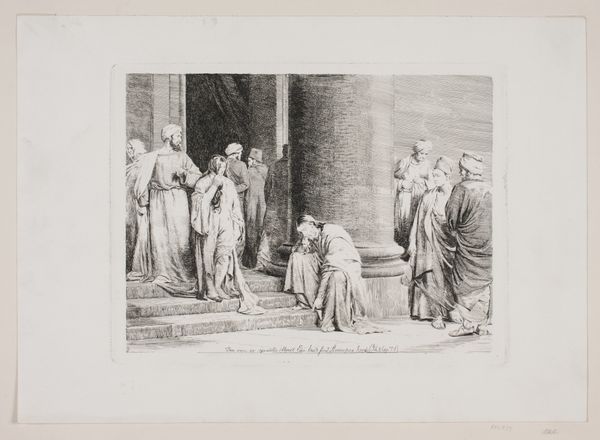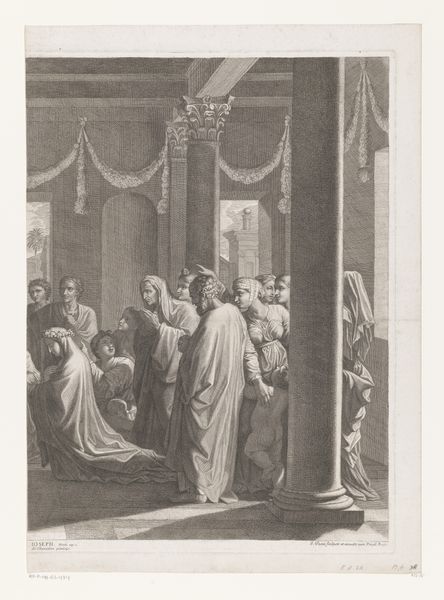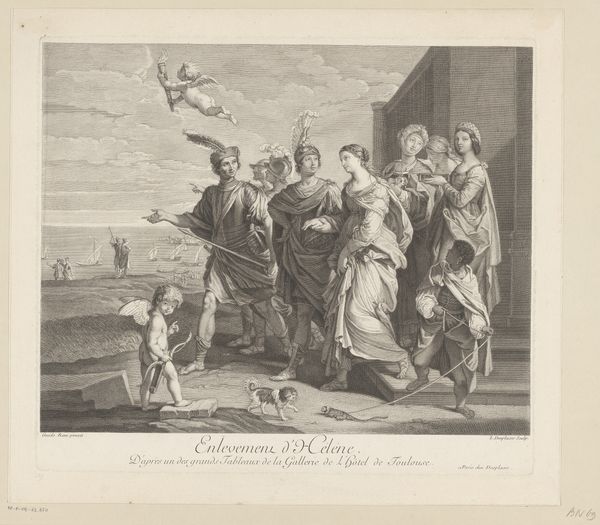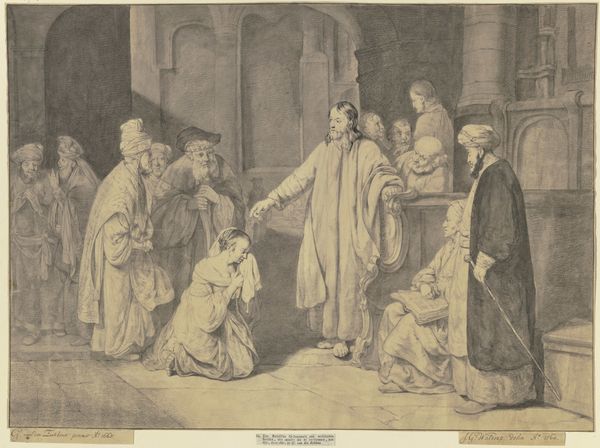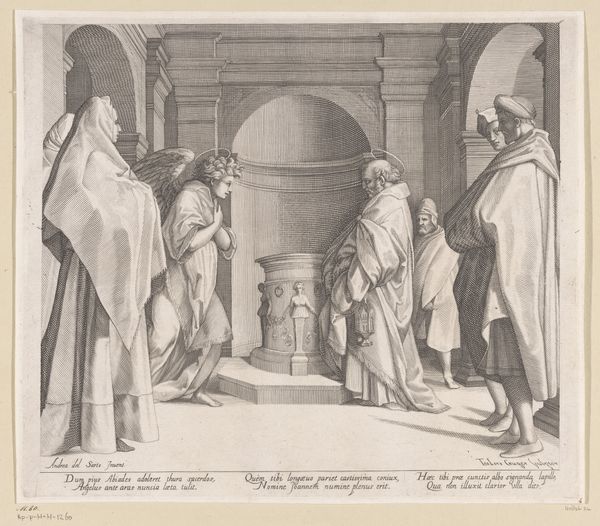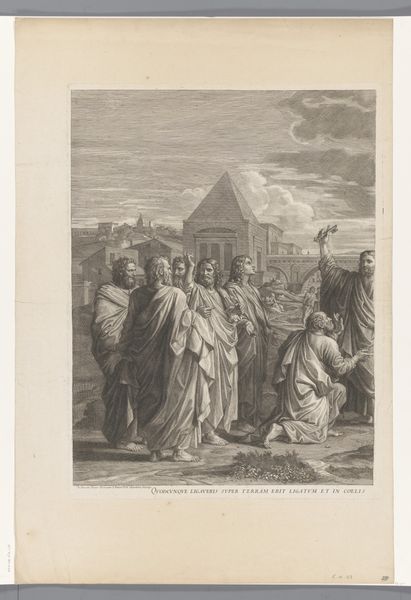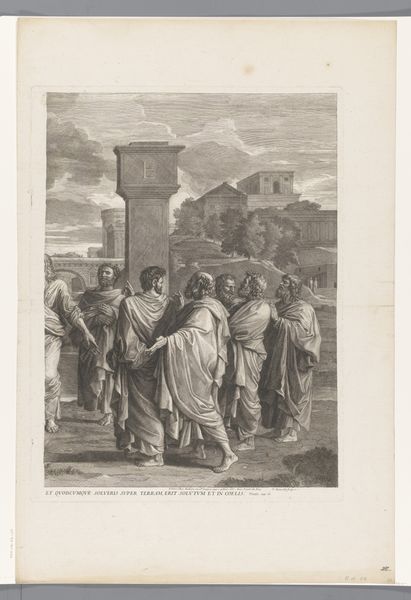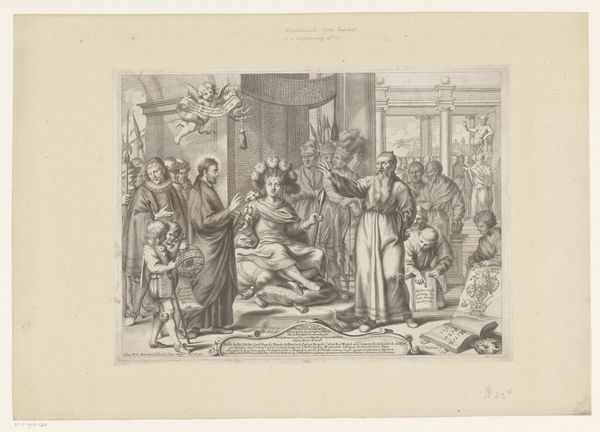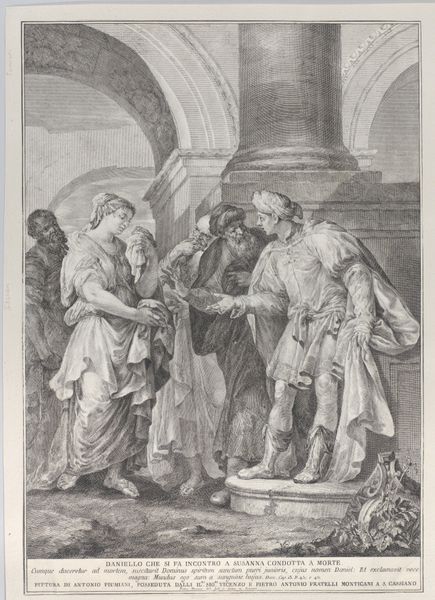
Dimensions: height 547 mm, width 648 mm
Copyright: Rijks Museum: Open Domain
Curator: Before us is "Christian Martyrs Being Carried Away," an engraving produced between 1870 and 1883 by Heinrich Nuesser. What strikes you initially about this work? Editor: It's starkly melancholic. The figures seem burdened not only by the weight of the body they carry, but also by profound sorrow. It speaks to the pervasive oppression of the early Christian community. Curator: Note the deliberate compositional structure. The pallid body of the martyr serves as a central visual anchor, creating a strong horizontal axis. What we call pyramidal grouping contributes to a sense of balance and order, counteracting the emotional chaos. Nuesser employs delicate gradations of tone to build form. How do you interpret that decision? Editor: The subdued palette amplifies the solemnity, certainly. But I think it’s vital to recognize how the martyr's passivity functions within the larger narrative. This echoes historical patterns of female martyrdom often portraying women as docile, voiceless symbols. How might the image empower, or disempower, early female Christians? Curator: It raises intriguing questions. Yet we must recognize the work exists in a period when history-painting conventions and romanticism were being expressed together. Look at how the scene is arranged under an arch. Nuesser emphasizes architectural elements to create depth and define the visual field. There's a carefully calibrated relationship between light and shadow too, wouldn't you agree? Editor: I do. However, those dramatic contrasts could be interpreted as reflecting the polarized experiences of privileged and persecuted people, of patriarchal narratives versus lived experience. Even in art, systems of power are inscribed, subtly, often without critique. How does the piece challenge or uphold contemporary values about social justice, do you suppose? Curator: It’s difficult to impose contemporary criteria upon art historical periods lacking such established vocabularies. By appreciating the balanced arrangement and tonal qualities, we begin to engage the composition on its own terms, to understand something more profound than political sentiment. Editor: Maybe, but sometimes those tonal arrangements hide more insidious messages that should be interrogated instead of excused for being “of their time.” What kind of activism did a scene like this provoke, what resistances were inspired? Curator: Regardless, one cannot deny Nuesser's technical ability, his mastery of form... Editor: Indeed. The piece still compels reflection, even debate, regarding the ongoing significance of resistance.
Comments
No comments
Be the first to comment and join the conversation on the ultimate creative platform.

